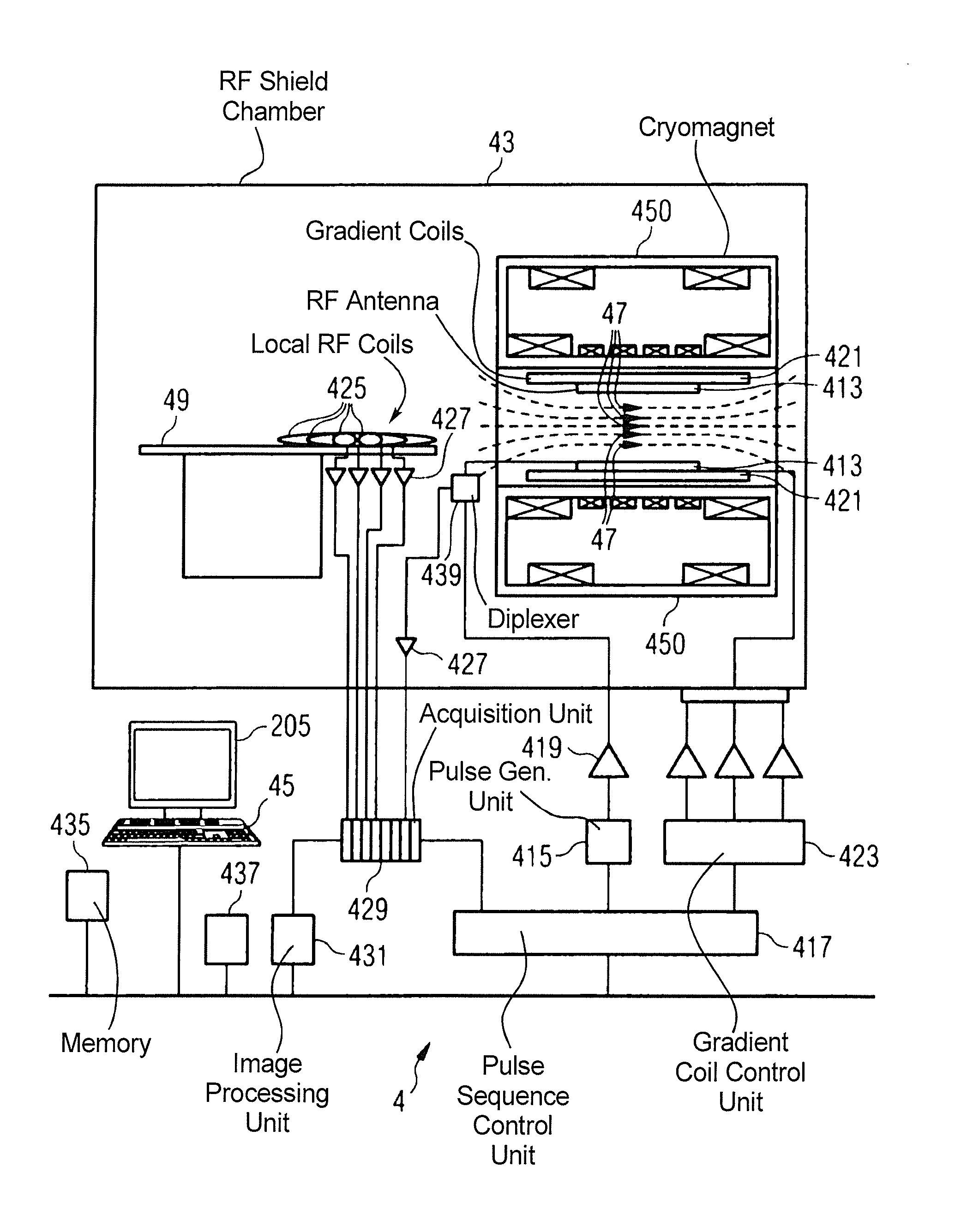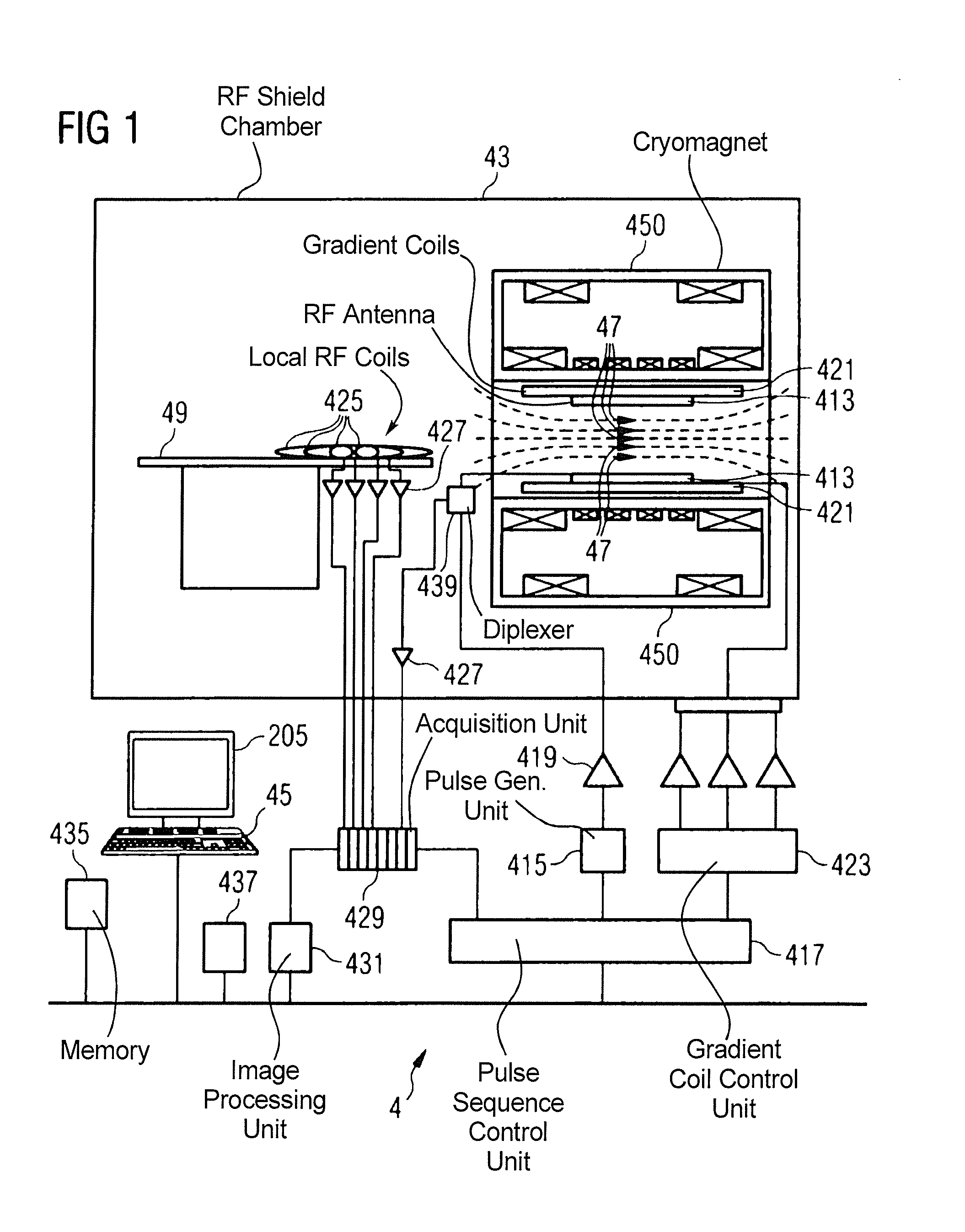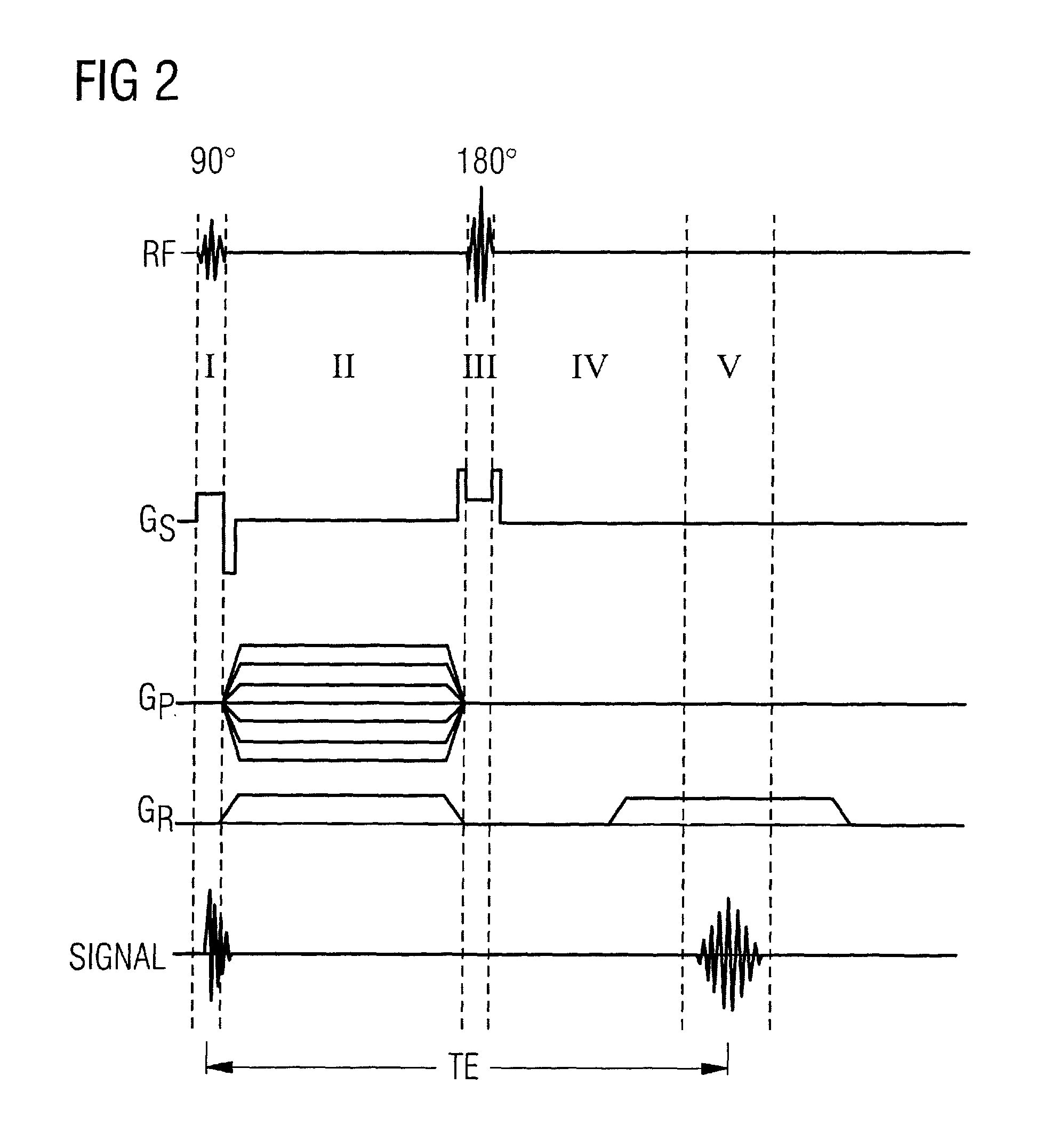Method and device for automated generation of a formal description of a magnetic resonance system measurement sequence, using a sequence model
a technology of sequence model and measurement sequence, applied in the direction of reradiation, measurement using nmr, instruments, etc., can solve the problems of prone to error, laborious management of so many parameters, and errors of sequence programmer in sequence programming, so as to reduce the tendency to error in programming
- Summary
- Abstract
- Description
- Claims
- Application Information
AI Technical Summary
Benefits of technology
Problems solved by technology
Method used
Image
Examples
Embodiment Construction
[0102]FIG. 1 shows the principle design of an MR scanner 4 with its essential components. In order to examine a body by means of MR imaging, various temporally variable magnetic fields that are tuned exactly to one another in terms of their temporal and spatial characteristics are radiated towards the body, and this leads to a resonant response of the nuclear spins to the radiated radio-frequency (RF) energy.
[0103]In a measurement chamber 3 shielded against radio-frequencies, a magnet 450 (for example typically a superconducting magnet) is provided that is cooled by liquid coolant. The magnet 450 with a cylindrical opening generates a static basic magnetic field 47 that is typically in the range from 0.1 Tesla to 3 Tesla or more in field strength. The basic magnetic field 47 has a high homogeneity, typically in a range of a few ppm for a volume of (for example) 15 cm diameter. A body or a body part to be examined (not shown in FIG. 1) is borne on a patient bed 49 and positioned in a...
PUM
 Login to View More
Login to View More Abstract
Description
Claims
Application Information
 Login to View More
Login to View More - R&D
- Intellectual Property
- Life Sciences
- Materials
- Tech Scout
- Unparalleled Data Quality
- Higher Quality Content
- 60% Fewer Hallucinations
Browse by: Latest US Patents, China's latest patents, Technical Efficacy Thesaurus, Application Domain, Technology Topic, Popular Technical Reports.
© 2025 PatSnap. All rights reserved.Legal|Privacy policy|Modern Slavery Act Transparency Statement|Sitemap|About US| Contact US: help@patsnap.com



